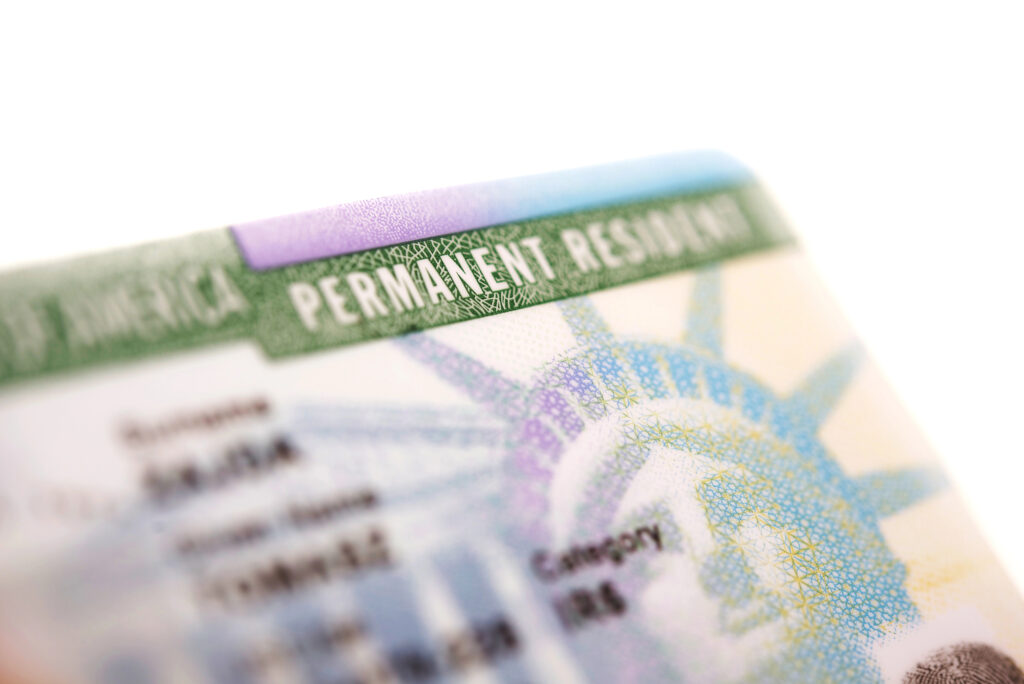How Does an Immigrant Go About Applying for Permanent Residency?
Trying to immigrate to the U.S. and apply for permanent residency (known as receiving a green card) can be daunting, as there are complex requirements and steps that need to be taken.
According to the U.S. Citizenship and Immigration Services (USCIS), once someone has applied for and received an approved immigrant petition and an immigrant visa number, there are two ways to move forward with achieving permanent resident status: Going through consular processing or adjustment of status. The primary difference between the two is where the immigrant is at the time of application.
What Is Consular Processing?
Consular processing applies to immigrants who are still in their home country. They can visit the U.S. consulate in their home country or country of current residence that’s not the U.S. to apply for an immigrant visa that will allow them to enter the U.S. as a permanent resident. There are several steps to go through consular processing.
- Determine the basis for the application. This includes situations such as a family member in the U.S. sponsoring the immigrant or an employer requesting they be allowed to work in the U.S. Sometimes, the immigrant requests refugee or asylum status.
- File an immigrant petition. This often involves someone filing on your behalf, such as those mentioned above.
- The USCIS issues a decision. Either the petition is approved or denied. If the latter, the USCIS will provide its reasons. An appeal may be possible.
- If approved, pay fees to the National Visa Center (NVC) and wait for the immigrant visa number to be issued.
- Once the visa is available, the consulate will schedule an appointment with the immigrant for an interview.
- If there are any changes to the immigrant’s situation (they become divorced or married, move, etc.), they need to notify the NVC, which could change their visa status.
- If approved, the immigrant will receive a visa packet, which they should not open. The immigrant must then pay the USCIS Immigrant Fee before planning travel to the U.S. They will bring the visa packet into the U.S. with them to give to the U.S. Customs and Border Protection (CBP) officer. Once they’ve been admitted to the U.S., the green card will be mailed to them.
What Is an Adjustment of Status?
An adjustment of status applies to immigrants who have a non-immigrant visa and are already in the U.S. Applying through an adjustment of status process allows the immigrant to request permanent residency with a green card and stay in the U.S. during the process rather than returning to their home country while waiting for the green card to be issued. The steps for an adjustment of status include:
- Determining if you’re eligible for a green card. If you’re unsure, it’s best to work with an experienced immigration attorney who can help you learn if you’re eligible and under which category (there are several).
- If required, have someone file the petition for you, such as a family member who is a U.S. citizen, permanent resident, or a potential employer. In some circumstances, you can file the petition directly with the USCIS.
- In some cases, you can’t file a petition until there’s a visa available, which your immigration attorney can help you with.
- File a form I-485. Once that’s filed, the USCIS will send you information for an appointment with the Application Support Center (ASC). That appointment involves providing fingerprints, a photo, and signatures.
- In some cases, an interview with the USCIS is required. The USCIS may also request more information, which must be provided before a decision on the application can be made.
- The USCIS sends its decision by mail. If it’s approved, the green card will be mailed later. If it’s a denial, the letter will explain why the adjustment of status was denied. Denials usually can’t be appealed, but there may be an option to file a motion to reopen or reconsider. Your lawyer can help you understand the options available to you in the event the application is denied.
Are There Pros and Cons to Using Consular Processing or Adjustment of Status?
There are some pros and cons to each. This is a general overview; specifics depend on each individual case.
- Length of time to decision. Adjustment of status can happen within 8-14 months, whereas consular processing can take 14-18 months.
- Fees. Adjustment of status can involve about $1,700 in fees, while consular processing can cost about $1,200.
- Decision outcomes. Customs officials can deny an adjustment of status application for discretionary reasons, but they can’t do that for consular processing. That means consular processing has a lesser chance of denial. However, adjustment of status denials can be appealed, while consular processing denials usually cannot be appealed.
- Travel during the decision process. Someone who’s in the adjustment of status process can usually travel outside the U.S. if they receive prior authorization. Someone in the consular process may have more difficulty traveling to the U.S.
What Should I Do if Need Help With Immigration into the U.S.?
Call Toland Law, LLC, at 857-347-3701 to request a free consultation. Immigration to the U.S. is a highly complex procedure, and simple errors can cause applications to be denied and delay the overall process. Working with our team of experienced, knowledgeable immigration attorneys may help you avoid missteps that could have disastrous consequences and could help the immigration steps proceed more smoothly.









